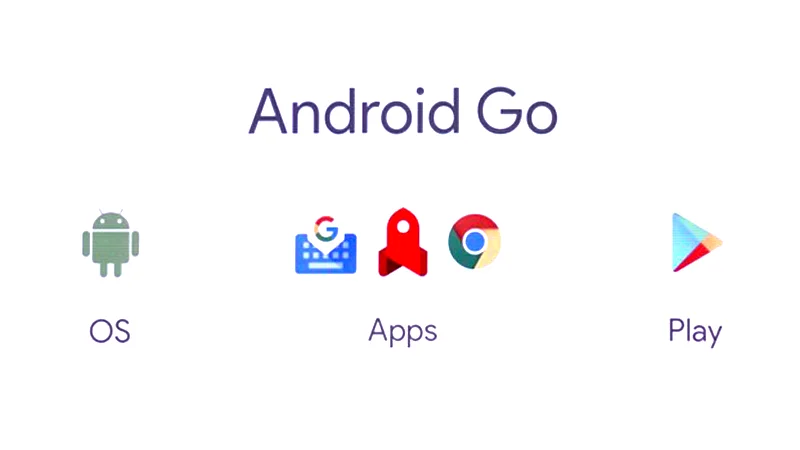Every time a new version of Android is released, it is generally seen as a major event. A slew of new features, a slew of design changes, and, more often than not, a new wave of phones to go along with them to accommodate the new version are all included in every new release.
And when it comes to something as significant as the release of a slimmed-down version of Android, the event is likely to generate considerable interest. Google announced at I/O 2017 the debut of Android Go, an operating system designed to operate on low-cost smartphones that are prevalent in poor countries. It took a year for OEMs to release their Android Go devices. Android app bundles are also being used by businesses for the distribution of their applications.
Below you’ll find some of the most popular Android Go smartphones, including the Ulefone Note 7, Samsung Galaxy M01 Core, Nokia 1, LavaZ50, ASUS Zenfone Live L1, and Tecno Spark 6 Air, Infinix Smart HD 2020, Tecno Spark Go 2020, and Huawei Y3. Android Go – The Concept behind Google’s Simplified Version of the Operating System
Let us begin by addressing the most fundamental issue. What is Android Go, and how does it work?
Android Go, sometimes known as Android (Go edition), is a slimmed-down version of the Android operating system that is meant to operate on low-cost smartphones and tablets.
In layman’s words, Android Go apps are designed to provide a high-quality smartphone experience on low-cost devices. Going back to the beginning, go apps for Android have helped millions of entry-level devices enhance their performance, reliability, and security by providing them with customized applications and features that were specifically designed to meet local requirements. The business plan that underpins Android Go is to grow the company’s operations into developing countries, which have the benefit of a large user base, but also face limitations due to a lack of storage space, a large app size, and a small amount of RAM.
In order to address these three fundamental difficulties that are preventing Android from reaching its full market potential, Google created Android Go, which — among other things – enables users to:
- Configure the Android operating system to operate on a phone with 1GB of RAM or even less.
- Reduce the amount of space used up by the operating system.
Reduce the data and storage requirements of the preloaded applications. Personalized Android Application Development Services are designed to supply you with a plethora of Android advantages.
How Android Go is trendy and most used?
Developed by Google, Android Go is a stripped-down version of the Android operating system that is intended to operate efficiently on low-end mobile devices (less expensive or premium).
As the popularity and quantity of mobile phones continue to rise throughout the world, this is a brilliant move by Google to expand its business strategy. Android Go OS guarantees that all Google-based apps utilize less storage space and data than they would otherwise.
As a result, it is intended to be a gift for devices with limited RAM storage capability. Indeed, even the preloaded programs would use fewer data and space as a result of this change. Instead of developing these applications from scratch, businesses may make use of top Android app development hacks such as integrating security APIs and plug-ins.
The Google Play Store, the Android Operating System, and the Apps are the three major areas in which Google is concentrating its efforts as it promotes the Android Go OS.
The most significant distinctions between Android Go and regular Android applications
1. Google and Google GO
Google Go is simple and lightweight, making it considerably simpler to install than other browsers. The size of the app is the most crucial factor to consider. It takes up around 12 MB of space, while the usual Google takes up approximately 166 MB of space. This saves a significant amount of time while downloading or upgrading the application. It offers all of the essential capabilities, such as voice search, Google Translate, and Maps, among others.
2. Gmail in and out
It is useful for consumers who own low-cost cell phones to be able to check and respond to messages on the same device. Gmail Go serves the same purpose as the standard Gmail application. The Gmail Go application has a file size of around 24.8 MB. The standard Gmail application consumes 77MB of RAM. The UI of the Go version has remained mostly unchanged. The swiping movements and other features are the same as they were in the previous version.
3. Google Map and Google map go
The Google Go Map’s APK (Android Package Kit) is just 0.009 MB in size, which is quite little. While the standard Google Maps application is 48 MB in size. Undoubtedly, there is a significant difference between the sizes of these two applications. Thus, Android Application Development Services have taken notice of the new, trimmed-down form and have begun working on building applications that are shorter versions of the original apps, which are now available.

